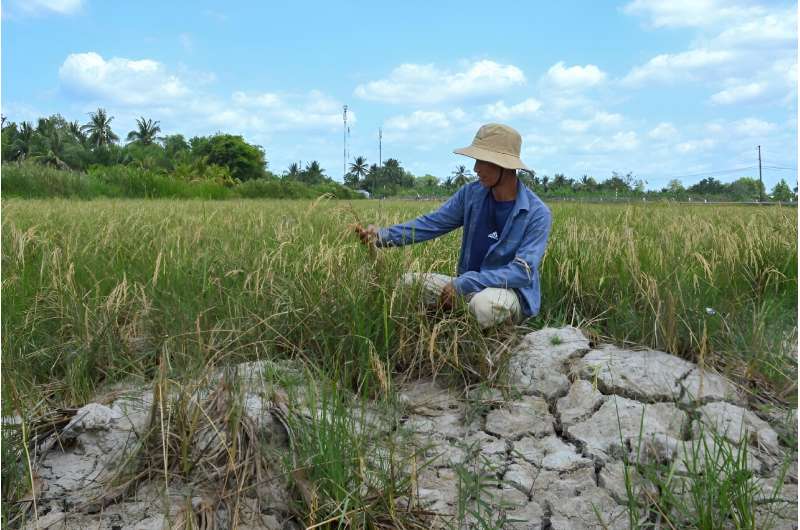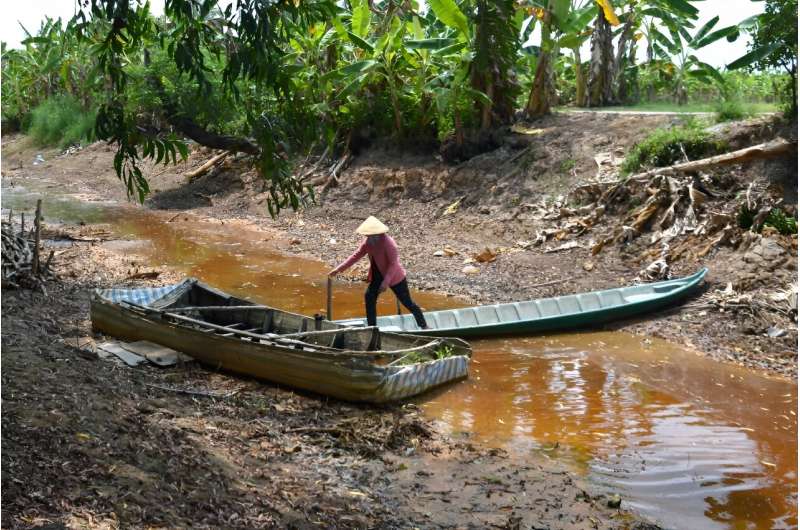This article has been reviewed according to Science X's editorial process and policies. Editors have highlighted the following attributes while ensuring the content's credibility:
fact-checked
reputable news agency
proofread
Vietnam's 'rice bowl' cracks in monster heat wave

Southern Vietnam, including business hub Ho Chi Minh City and its "rice bowl" Mekong Delta region, suffered an unusually long heat wave in February, weather officials said Wednesday.
Several areas of the delta are also suffering drought and farmers are struggling to transport their crops due to low water levels in the region's canals.
The intense period of heat began on February 9, meteorologists told AFP, with temperatures reaching up to 38 degrees Celsius (100 degrees Fahrenheit)—an "abnormal" high for February in southern Vietnam, which usually sees hot weather peak at around 39C (102F) in April or May.
In Ca Mau province, at the tip of the Mekong Delta, farmer Hong Chi Hieu told AFP that "severe drought" had made the earth "very, very dry" and caused problems using the waterways.
"Most of us grow rice here. We have quite a bumper crop this year but the dry canals are badly impacting the transportation of our harvest," he said.
Le Dinh Quyet, chief forecaster at the Southern Meteorological and Hydrological Administration, said the El Niño weather phenomenon and the general impact of global climate change were contributing to the unusually long dry spell, which is still going on.
Globally, 2023 was the warmest year on record, according to the World Meteorological Organization (WMO).

It warned last month that this year could be even hotter because the naturally occurring El Niño climate pattern, which emerged in mid-2023, usually increases global temperatures for one year afterwards.
Scientists have warned extreme weather is also being intensified by global warming.
More than 80 canals have dried up in the Tran Van Thoi district of Ca Mau province, state-controlled news site VNExpress reported.
According to local authorities, agricultural production is entirely reliant on rainwater and, given its scarcity this year, farmers were forced to pump water from waterways into their fields.
That caused a large height difference between the riverside road surface and the water level below, leading to subsidence and landslides, local authorities said, according to VNExpress.
Tran Van Thoi has recorded around 340 cases of subsidence and landslides from the beginning of the year, resulting in more than 13 billion VND ($500,000) of damage.
© 2024 AFP





















